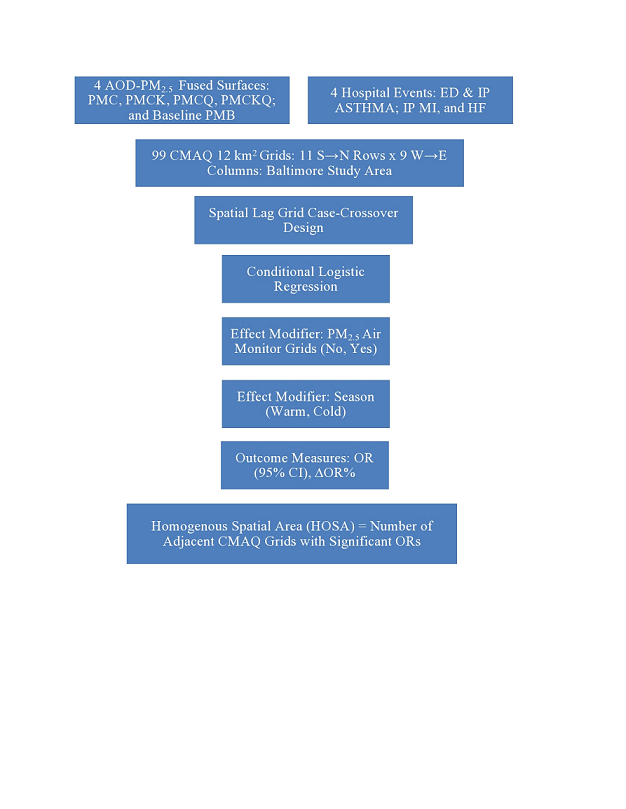Optimal use of Hierarchical Bayesian Model (HBM) assembled aerosol optical depth (AOD)-PM2.5 fused surfaces in epidemiologic studies requires homogeneous temporal and spatial fused surfaces. No analytical method is available to evaluate spatial heterogeneity. The temporal case-crossover design was modified to assess the spatial association between four experimental AOD-PM2.5 fused surfaces and four respiratory-cardiovascular hospital events in 12 km2 grids. The maximum number of adjacent lag grids with significant odds ratios (ORs) identified homogeneous spatial areas (HOSAs). The largest HOSA included 5 grids (lag grids 04; 720 km2) and the smallest HOSA contained 2 grids (lag grids 01; 288 km2). Emergency department asthma and inpatient asthma, myocardial infarction, and heart failure ORs were significantly higher in rural grids without air monitors than in urban grids with air monitors at lag grids 0, 1, and 01. Rural grids had higher AOD-PM2.5 concentration levels, population density, and poverty percent than urban grids. Warm season ORs were significantly higher than cold season ORs for all health outcomes at lag grids 0, 1, 01, and 04. The possibility of elevated fine and ultrafine PM and other demographic and environmental risk factors synergistically contributing to elevated respiratory-cardiovascular chronic diseases in persons residing in rural areas was discussed

